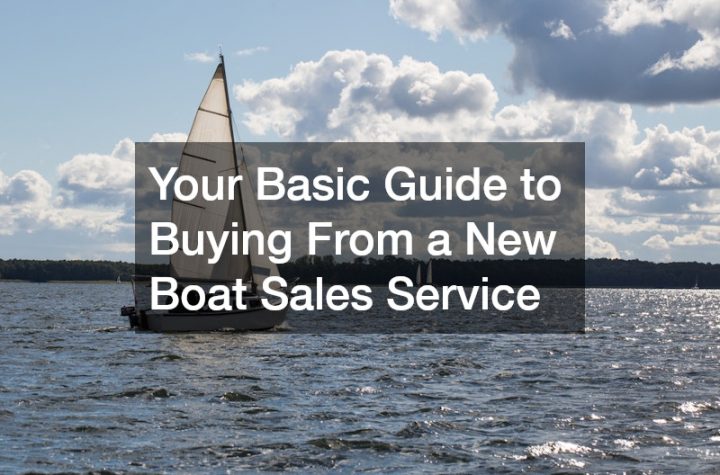

Going on family bike trips promises a thrilling experience with various adventures that will help you build relationships and discover places. However, within the limits of interstate cycling expeditions, the preparation process takes center stage. This article offers the essential guidelines for planning and having fruitful interstate family cycling adventures. It aims to supply readers with practical advice and knowledge to ensure that their journey is safe, hitch-free, and laden with memorable moments. Thus, whether you are an experienced cyclist or a family interested in including fun into a holiday blend, this guide will be your map on the way to a fantastic family bike ride.
Prepare a First Aid Kit

Safety should always be the first consideration in family bike trips. An interstate cycling adventure without a well-stocked first aid kit is unthinkable. It’s not only about the band-aids and the antiseptic wipes. The list of medical equipment to include can be quite long.
Place the wound care items on the list, including adhesive bandages, gauze pads, adhesive tape, and antiseptic creams or wipes. Tweezers are useful for extracting splinters or any foreign object. Include a digital thermometer for temperature monitoring if you feel unwell. Don`t miss buying over-the-counter pain medications, anti-diarrhea pills, and antihistamines. Each family member should take their personal medications. A simple handbook with basic first-aid guidelines can sometimes be a lifesaver. Leave the kit handy, not stored in a backpack.
Bring a Tire Pump
While going on family bike trips, the need to look into the condition of your bikes becomes important. More specifically, the tires ought to be focused on. They are the link that connects you to the road, and their condition will greatly influence your ride comfort and safety.
Every cyclist must have a reliable tire pump. A flat tire can spoil your adventure, so a pump must be carried. Concerning interstate cycling, the best means is a compact and lightweight mini pump. It is strong and pumps up tires fast.
Don’t forget to take a tire pressure gauge for proper inflation and better biking results. A puncture repair kit is also needed; it should also have patches, glue, and sandpaper. A properly fixed flat tire will prevent it from pulling over again to pump it up.
Take Breaks as Needed
When you cycle down the highway on those family bike trips, you get used to the rhythm of the ride. But don’t forget one crucial aspect of a successful journey: having breaks when needed. Rest areas have multiple purposes — recharging and shooting eye-popping views.
They are crucial in keeping one in perfect physical health throughout the journey. You will not feel it at first, but the constant pedaling, in fact, can reach your feet and your legs. A foot doctor will advise making regular pauses for lying and stretching.
Between breaks, take off your shoes, as well as socks, to let your feet breathe. Do stretches for your legs and ankles to loosen them up. Looking after your feet will assure you that you won’t have to cut short your trip due to pain or an injury. Breaks for hydration and snacking. Keeping energy levels is paramount, in particular for the young riders.
Bring healthy snacks (fruits, nuts, and energy bars) for a quick energy fix to keep you cycling. Remember the mental part as well. Breaks enable rest, reflection on the environment, and creating cherished memories. There is more than just tripping involved. It’s an opportunity for bonding, jokes, laughs, and memories.
Pay Attention to the Weather Forecast

While planning for family bike trips, it’s easy to overlook one crucial factor: weather prediction. It’s not just a matter of packing a rain or sun jacket. It is maintaining the safety and comfort of your family throughout the trip.
Weather forecasts offer important facts for trip planning. Estimating the probability of rain allows for scheduling departure time, road selection, and the necessity of waterproof equipment. This could make the gap between fun and a wet ride.
Temperature, wind speed, and hail risk are also vital. Considering the forecast prevents hail damage and ensures safety. It is crucially important for you to check the forecast for your destination along the way because the conditions may differ. Look at humidity, cloud cover, and UV index for comfort and safety.
Dress for Exercise
In family bike trips, your choice of clothes can drastically affect your comfort and the whole experience. You might be attracted to the rugged appeal or western wear styles, but remember that you will do exercise, not a fashion show. Cycling creates heat; therefore, proper clothing management is essential.
Technical fabrics pull sweat away, keeping you cool and dry. Comfort doesn’t mean compromising on style. Take a look at Western-style cycling gear, maybe bandanas for sun protection. Layering is key: moisture-wicking base layer, intermediate insulating layer for cold, and outer waterproof layer for rain. Padded cycling shorts provide relief in long rides. Select a shoe with additional support and optimum comfort.
Practice Hygiene on the Trail
Though hygiene may not be the first thing one thinks about while planning family bike trips, it is a significant element one should not ignore. While you are out on the trail, far from your home with its shining shower doors, cleanliness remains important.
Outdoor activities do not have to be at the expense of personal hygiene. Overlooking cleanliness can cause discomfort, skin problems, or illness, thus ending your journey abruptly. Keep clean on the trail with these tips:
- Use biodegradable wet wipes to freshen up during the breaks or at the end of the day. They’re lightweight and portable.
- Clean all your gear, including the helmet and gloves, to avoid bacteria buildup and stink.
- Hand sanitizer is a must-have when touching shared surfaces and handling food. It keeps germs from spreading.
- Portable camping showers allow the cleaning of sweat and dirt from your body. Go for a small and practical model.
- Wear clean, light, and quick-drying clothes on the trail by the end of the day for better hygiene and comfort.
Observe Local Bike Laws

Family bike trips are a wonderful way to bond and explore, but cyclists must obey local rules. Failing to pay attention to these rules will endanger you and your family or even land you in jail, turning the expedition into a bitter experience that may require the intervention of a personal injury lawyer.
Bike laws at the local level focus on the safety of bicyclists and motorists. These include topics on traffic lights, the right of way, helmet use, and riding on sidewalks. Knowing these regulations before riding is essential. In many parts of the city, cyclists must use designated bike lanes unless unavailable. If none are there, people can pedal as close to the right edge of the road as possible.
Nonetheless, rules can differ, so always look up local rules. Helmet laws vary by location; some might demand cyclists wear helmets regardless of age. They are also prescribed for younger drivers. Nonetheless, helmet-wearing should be imbibed among young cyclists to avoid serious injuries.
In many cases, nighttime cycling also has extra regulations, including using lights and having reflector gear. Even if not legally mandatory, it’s a good safety measure to ensure visibility to other road users. Be aware the laws may change when you travel in different jurisdictions. A simple search on the internet or a visit to the local tourism office is enough to acquire the needed information.
Be Visible to Drivers
Family bike trips provide fun and excitement, but safety always comes first. One of the most important things to do to ensure you are safe is to ensure drivers can see you. No one wants their journey to consign to memorials at the site of a tragic accident.
Visibility begins with what you wear. Go for the bright colors in the day and the reflective gear for the early morning or evening rides. Fluorescent vests, armbands, and helmet covers could be worn, thus increasing a driver’s notice of you.
Lighting up bikes is yet another method to be seen, except for low-light environments. Front and rear lights are not only for night cycling but also for cloudy days and cycling through shaded areas. Some cyclists even opt for daytime running lights for added visibility.
Road positioning is equally as important. Stay in places where the drivers can easily spot you, typically on the right side of the lane. However, if there is a danger of being caught in a driver’s blind spot, taking a central position for a short time might be safer.
Eye contact with a driver can tell you that they have noticed you, especially when you are at an intersection or crossing. A quick nod or hand wave can symbolize recognition of each other having shared the road already. Signals are another significant aspect of being visible and predictable to drivers. You signal your turns and stops, allowing drivers to react, thereby reducing accidents.
One of the saddening reminders of when cyclists and drivers don’t make the road safely together is roadside memorials. You don’t only boost your safety but also ensure a safer environment for everyone who uses the road by being more visible. Therefore, when designing your family bike tour, remember that visibility is as crucial as seeing others.
Stop to Visit Interesting Sites
Family bike trips allow you to encounter new locations more relaxedly than by car. It’s not only about the endpoint; the process is part of the thrill. Therefore, they deserve short-term visits. Historic places allow children to re-live history as they offer a physical touch to the past. It is more profitable to see where events occurred than to know about them through the letters.
Go to old battlefields, historic houses, and monuments to make your trip educational. Nature reserves and parks are great places to stretch your legs, have a picnic, and enjoy the local wildlife. Local attractions, including museums, art galleries, and amusement parks, offer fun experiences and memorable stops where tourists can encounter local culture and entertainment.
Even the most ordinary places could be made interesting with the right attitude. For instance, a local market can be an opportunity to taste regional food. An ordinary visit to a hardware store may not seem very interesting. Still, if you desperately need that tool you haven’t taken along, tool rental services might be just what you need to get out of the trouble.
Remember that everyone should be involved during the planning process. What one family member may like may not interest the other, so balance is essential. Plan ahead, and be flexible as well. If you see something that attracts you on your way, don’t hesitate to drop everything and learn more about it. This can also be an opportunity to teach children about unexpected and spontaneous adventures.
Bring Tools for Maintenance

Prepping for a family bike trip isn’t only about packing the ideal snacks and clothes. It’s also about looking for potential bike issues on the way. A good idea is to carry a basic set of maintenance tools with you. That will help to prevent small problems from turning into large-scale ones.
A flat tire can happen at any time. Therefore, a patch kit and pump are necessary. Teaching older children how to put a patch on can be a good start towards independence and teaches problem-solving. A spare tube will also be of use in larger punctures. A bike multi-tool with hex wrenches, a screwdriver for gears, and a chain tool can come to the rescue at minor mechanical failures.
A mobile phone is essential for emergencies when looking for a bike shop, calling for a ride, or even consulting a criminal lawyer if an unfortunate incident occurs. Learn the basics of bike maintenance to avoid problems that could cut your ride short beforehand for longer or remote rides. Remember also to use tools responsibly, especially with children. Safety should always be the first consideration.
Family bike trips on interstate routes are amazing adventures that produce unforgettable experiences. Drivers should have visibility, interesting sites, and tools for maintenance taken during the journey to make the journey safe and enjoyable. In preparation for this family adventure, always be ready with the necessary preparations, safety measures, adaptability, and the need to explore.




More Stories
How Cycling Helps With Weight Loss
Your Basic Guide to Buying From a New Boat Sales Service
Where to Get Ski and Snowboard Rentals